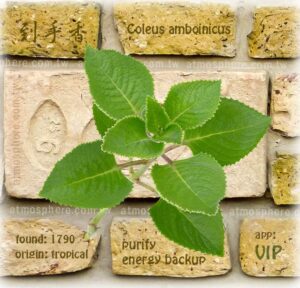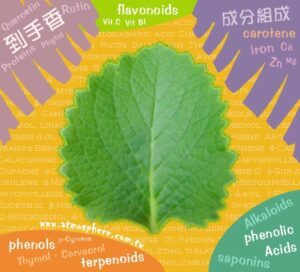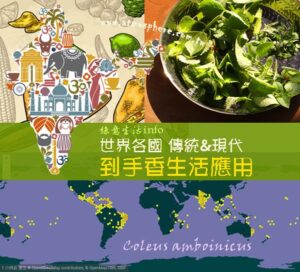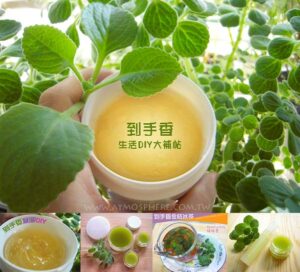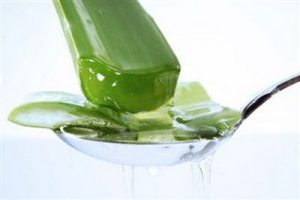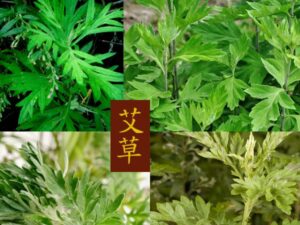Your cart is currently empty!
SHARE | Facebook fans page LIKE 
綠意生活 Green Life info ★ 實用生活資訊 Update: 2021/12/07
Completely Study【Coleus amboinicus | Cuban Oregano】and get back the right hand from its name issue
PART 1 - What you should know about this herb
PART 2 - The compostion
PART 3 - features , properties , safety notice
PART 4 - traditional folk common uses
PART 5 - various DIY ideas
?? This article uses auto translate to English, so it’s not so fluent. We will make a correction soon. Thanks for your reading ??
Coleus amboinicus is classified as a kind of folklore herb plant in Taiwan. It has the effects of "clearing heat, relieving itching, reducing swelling, and strengthening stomach". There are many other potential pharmacological effects, including calming and soothing, reducing fever, anti-inflammatory, and helping sleep. , Anti-mosquito, anti-bacterial, anti-viral, anti-malaria, increase lactation, relieve nausea and flatulence, morning sickness (smell dry leaves/tea), pneumonia, respiratory tract infection, phlegm, eliminate excess mucus, burns, eczema, psoriasis . The use of Coleus amboinicus is a very common folk remedy in Taiwan. Some folk herbs stores also sell Coleus amboinicus juice. It is said that "the juice can be used for external application to reduce swelling and blood stasis, but it will be very irritating if it is not applied to the wound." (Reference News)Is Coleus amboinicus poisonous? is it safe? Is it edible?
Coleus amboinicus is a green herbal plant that is widely used in both the East and the West. There are at least hundreds of academic research papers in the world. It is generally safe for moderate external use and small consumption. In Taiwan, according to the existing information of the Medicine/Agricultural Department/ Health Dept. , it is not so safe to eat. It contains strong effect essential oil. If consumed in excess or improperly applied externally, it may cause allergic and toxic reactions.
What is puzzling is that Oregon, Tibetan fennel/caraway, and thyme, which are similar to hand fragrance, are all in the list of non-traditional raw materials evaluated for food safety by the Food and Drug Administration of the Ministry of Health and Welfare. Why not put Coleus amboinicus in the eatable list ? In this list, patchouli, which is easy to confuse with Coleus amboinicus, also specifically emphasize its alias " 到手春dǎo shǒuchūn", which seems to be a deliberate suggestion that Coleus amboinicus cannot be eaten. Be careful don't get mixed up with them XD.
On the other hand, many people abroad regard Coleus amboinicus as vegetable, herb tea, food spices, and seasonings. For at least a few hundred years in Indonesia, it has been a confinement tonic plant for postpartum women to restore physical strength and increase lactation. The tradition is Drink the Coleus amboinicus soup every day (150g leaves, add water, onion, garlic and turmeric, stir fragrantly and boil it into a soup of about 500c.c.) for one month.
So it's quite contradictory, I can only decide on my own. It feels like a lot of people have enjoyed Coleus amboinicus for many times, and we are still hesitating to be safe. It seems a bit ridiculous. What I want to emphasize is that you should not give up eating forever just because of once choking. There are definitely useful benefits for Coleus amboinicus. It is not so dangerous to use as imagined, not really have to be so nervous just because some people use it in wrong ways and get harms.
On the contrary, neither to believe exaggerate stories about its healing properties . The effect of herbs usually varies from person to person. It should be noted that it cannot be used in eyes, wounds, or dripping into the ear canal. Test a small amount for allergies before eating or applying. The leaves should be washed and cleaned before use.
In the past, there was controversy about the low toxicity of Coleus amboinicus. In Taiwan, there's a person had consumed a large amount of whole pot of leaves soap and caused poisoning death. There were also some people got allergies, skin ulcers and cellulitis infections caused by long-term use it to cover the herb paste on skin. Another case is eye damaged. This case pasted herb mud on eyes after surgery, and then caused mold infections / severe visual impairment.
toxic.kmu.edu.tw《Taiwan Poisonous Chinese Herbal Medicine Toxicity Database》has classified the toxicity of Coleus amboinicus as "Class B, Level 2" (human poisoning cases have been reported), and classified as "liver toxicity" and "skin toxicity" category, but the poisoning dose and mechanism are unknown. This database will not be updated after 2021.6.27. Said that this database should not be regarded as a normative basis for formal representation of the government. Information about edible plants, you can check ●→NEHRC ( National Research Center) .. ●→ Food Safety Information, which may link domestic and international food safety website for information on countries. In the 【食安解析技術報告 Food Safety Reports】tab area are all research reports and articles. Two articles there can be references for toxicity of plants.●→《Technical Report on Plant Natural Toxins in Food》This report is written about very detailed and professional introduction to the toxicity of edible plants. Because Coleus amboinicus is not listed as edible or medicinal by the Food and Drug Administration, there is no mention of it in these two articles.
Many plants can cause a small number of people to be allergic to certain specific ingredients, such as soybeans and aloe vera, and some people are allergic to it. The "Taiwan Herbal Medicine Toxicity Database" cited two papers in the toxicity section of the reference materials, none of which focused on the research on Coleus amboinicus, but on thymol and carvacrol. This seems to be inaccurate and cannot be directly determined. The toxic effect. After all, to cause a poisoning reaction, there must be a content ratio. Moreover, the leaves only contain about 0.1% of essential oils. If only a few pieces of leaves are taken, it should not cause poisoning. Essential oils such as Oregon and Thyme also contain these two ingredients, and the content may even be more than that of Coleus amboinicus. It is generally believed that Coleus amboinicus can be used as a substitute for Oregon. Aromatherapy does consider Oregon and Thyme essential oil as strong type (high pharmacological effect), which must be used carefully, but Oregon and thyme are plants that can be eaten with peace of mind in Taiwan. Oregon/oregano is listed in the《Taiwan Herbal Pharmacopeia》issued by the Ministry of Health and Welfare , Thyme and Coleus amboinicus are not included in this book.
What about pets? Can a hairy child use or eat Coleus amboinicus ?
The answer is not to use essential oil!essential oil of Coleus amboinicus * is toxic to cats, dogs, and horses. The common symptoms of poisoning are vomiting, diarrhea (bleeding), depression, anorexia, muscle weakness and trembling, excessive drooling, excitement, scratching, and lethargy. Skin and mucous membrane irritation can cause rash and redness. Long-term chronic poisoning or excessive intake can affect the liver and kidneys of cats.
Component materials that are toxic to dogs( eat bite / inhalation / contact )/ leaves of Coleus amboinicus :
Alkaloids, Diterpene, Glycosides,
essential oils ( methyleugenol , eugenol , thymol , Carvacrol)
Sterols , Tannins , Triterpenoids
Information Source:
●→AnimalPath.org
● → United States Wag Animal-care institutions(dogs.Cats)
●→ Prevention of Cruelty to Animals ASPCA → American institution
●→ PetMD
Scientific researches had confirmed Coleus amboinicus's multiple healing properties
Previously, it was possible that there were relatively few research materials on Coleus amboinicus, so there were a few adverse reactions that caused doubts. However, in the past few years, there have been more researches on this herb, mostly are about medical research and bio nutrition. For example, a biotechnology company in Taiwan has developed a drug for treating diabetes wounds, which has passed the domestic review and approval. During the COVID-19 epidemic, there were also studies on the effectiveness and safety of medicinal plants as adjuvants for the treatment of respiratory tract (●→Thesis link Sep. 2020 ) The experimental evaluation showed that Coleus amboinicus is highly safe, but it is lack of proof of effective in relieving respiratory infections.It is important to note that preparations containing thymol * should not be used in infants less than 30 weeks old, which will cause laryngospasm* in the next few months .
2011, A research titled ●→ experimental Coleus amboinicus oral toxicity in animals The experiment is one day 2000 mg / kg and 28 consecutive days of daily oral administration of 200,400 mg kg respectively test / acute and sub-acute toxicity. The experimental results showed that there was no acute/subacute toxic reaction to the crude extract of Coleus amboinicus, including breathing, heartbeat, body weight, physiological reaction observation, liver function transaminase (GOT and GPT) and renal function index ALPs levels and other indexes were not abnormal or any bad changes. Weight loss or gain is an important indicator of toxicity. In the subacute toxicity test, the weight of the experimental group increased significantly, but the control group also increased. Therefore, the inference is that *Coleus amboinicus supplemented with rich nutrients and water caused weight gain, not Toxic reaction phenomenon .* in the next few months .
Conclusion: Based on the current standard qualitative and quantitative research on crude drugs, it is possible to formulate a set of evaluation criteria for the quality and purity of Coleus amboinicus.This study confirms that the crude extract of Coleus amboinicus is safe and non-toxic when consumed, and therefore it will be widely used in traditional medicine.
2014, another research ●→ Chemical composition and Toxicological evaluation:「In acute toxicity, the extracts did not cause any mortality or evidence of adverse effects following oral administration of the highest dose of 10,000 mg/kg of crude extract in both mice. In sub acute study, normal body weight gains were observed during the study period compared to the control group. The kidney function parameters (Urea, creatinine, uric acid) were significantly increased following administration of extract. Histopathological examination of extract treated groups showed necrosis of hepatic cells with generalized congestion in the renal cortex, pneumonitis and sloughing of intestinal villi.
Conclusion : *The aqueous extract is rich in phytochemical compounds that are of therapeutic value.No mortalities were observed during acute and sub acute toxicity study period. These finding indicate that the extract caused treatment- related toxicological abnormalities which increased with dosage.The aqueous extract of P. amboinicus is safe to use as indicated by the high LD50 value, but should be used with caution at high doses.。」
●→ Taiwan Agriculture Dept.《Herb plant website》(2014.8.28 article) has a very detailed introduction, "Research data shows that carvacrol and thymol extracted from the leaves of hand incense have strong It has anti-inflammatory and analgesic effects, so it has a good effect in the treatment of sore throat and anti-inflammatory and sterilization .Carvacrol *is the main volatile component of Coleus amboinicus. It has a variety of activities and has anti-inflammatory, anti-microbial and anti-oxidant effects. Related research, but the mechanism of action in the organism is not yet clear, and long-term toxicological studies have not yet been established. Due to the different ways people use it, there have been cases of poisoning caused by excessive use of Coleus amboinicus. Mild poisoning can cause allergies. In severe cases, multiple organ failures have occurred, so special attention must be paid to the use."
According to this ●→ Research thesis(2016), the toxicity caused by Coleus amboinicus should be caused by two types of ingredients, diterpenes and flavonoids.
Taiwan Agriculture DepartmentForestry Research Institute of Agricultural Science and Technology Center and Agricultural Policy Research 2021 released the latest scientific research ●→ A study on the composition and bioactivity of essential oil from Plectranthus amboinicus 》The study uses Coleus amboinicus planted in Taipei to experiment, confirmed that" in the experiment "Under the mode", the essential oil of Plectranthus amboinicus and carvacrol compounds have anti-inflammatory activity and no cytotoxicity.Conclusion: Plectranthus amboinicus is a native plant. The test results show that its essential oil has excellent anti-oxidant, antibacterial and anti-inflammatory biological activities. Therefore, in the future, we can expect to diversify the application of this essential oil and develop multi-purpose use."
At the end, I'd like to make a summary. According to many studies and the common folk use treat it as aromatic vegetable herb in foreign countries, it is determined that Coleus amboinicus is a safe edible plant, but it needs to be appropriate. As long as a little bit of Coleus amboinicus can get its benefits and nutrition. Normally nutrition supplements would have note on bottle label suggesting " take too much will not be better " , then *Coleus amboinicus is " NOT to take too much will be better "If you use hand-scented scent as a spice seasoning or herb tea, you will not have the problem of eating too much.
References / Related Research theses
[2020] 左手香之類黃酮和總酚類化合物最適化萃取及其抗氧化特性分析
[2020] NUTRITIONAL SIGNIFICANCE OF INDIAN BORAGE (PLECTRANTHUS AMBOINICUS) : A REVIEW
[2019] 鑲邊到手香對抑制皮膚老化相關酵素活性及皮膚細胞移行能力之研究
香芹酚為鑲邊到手香主要指標成分。在DPPH清除自由基能力、彈性蛋白酶與酪胺酸酶抑制活性及指標成分香芹酚含量也呈現相同趨勢。另外、鑲邊到手香萃取物於人皮膚角質細胞(HaCaT)試驗中呈現正向癒合能力,其中95%乙醇萃取物具有較佳皮膚細胞癒合能力,具有劑量依存關係。綜上所述,鑲邊到手香之最優化萃取溶劑為95%EtOH,具有較佳抗氧化能力、皮膚老化酵素抑制作用及皮膚細胞癒合能力。本研究所得結果將有助於未來化妝品及保養品之開發與應用。
(2016) Coleus aromaticus: a therapeutic herb with multiple potentials
[2016] 使用氣相層析質譜儀分析不同季節的左手香精油成分
在不同季節採收萃取的左手香精油其成分與含量有顯著性差異。
使用乙醇溶劑萃取左手香、斑葉左手香 ( Plectranthus amboinicus Well-sweep wedgewood )、鑲邊左手香 ( Plectranthus amboinicus cv. Variegatus ) 與碰碰香 ( Plectranthus hadiensis var. tomentosus )、vettiveroides 等五種常見不同品種的葉片,其萃取物經分析後發現左手香、斑葉左手香與鑲邊左手香皆以香芹酚為主要的成分,含量各為 75.02 %、 73.35 % 與 68.25 %,其中斑葉與鑲邊左手香的成分與含量比例更為相似,另外其它主要物質為對-傘花烴 ( p-Cymene )、γ-松油烯 ( γ-Terpinolene )、石竹烯 ( Caryophyllene )、α-香檸檬烯 ( α-Bergamotene )、植物固醇 ( Phytol ),而鑲邊左手香則有較高的倍半萜烯含量。比較其它品種,碰碰香的萜烯類 ( 23.66% ) 與醇類 ( 59.45 % ) 成分種類比其它品種高,其主成分為檸檬烯 ( Limonene )、蛔蟲萜 ( Ascaridole )、芳樟醇 ( Linalol )、植物固醇 ( Phytol )、視黃醇 ( Retinol )、 Pimara-7,15-dien-3-ol 等物質,而在vettiveroides的品種則是以香葉醇 ( Geraniol )、乙酸香葉酯 ( Geranyl acetate ) 為主要成分。
(2015) 香芹酚(Carvacrol)在到手香(Plectranthus amboinicus (Lour.) Spreng)植物的根、莖及葉組織中的分佈及抗菌活性
(2014) Antimicrobial activity of coleus amboinicus on six bacterial strains
(2013) Anti-bacterial and anti-fungal activity of coleus leaves consumed as breast-milk stimulant
(2012) Antioxidant and Antibacterial Activities in the Leaf Extracts of Indian Borage
[2009] 左手香及其活性成分香芹酚鎮痛及抗發炎作用機轉之研究
(2008) 屏科大《到手香中Carvacrol之消炎作用》
(2006) Antioxidant and free radical scavenging activity of an aqueous extract of Coleus aromaticus
[2006] Plectranthus: A review of ethnobotanical uses
Beneficial Effects of Coleus amboinicus
The following summarizes the potential effects of Coleus amboinicus by citing a number of academic experimental studies. Only for those who are interested and want to know more about Coleus amboinicus, at least know that it is also a good medicinal plant that is worthy of more research. But don’t treat yourself as an experimental white mouse. If you have a disease, it is better to find a doctor to treat it.
A collection of researches on the efficacy of Coleus amboinicus
| Active-Compound.properties.method.link to thesis | |
| Antioxidants | Carvocrol 、 Thymol inhibit DPPH free radicals and hydroxide free radicals from forming leaf extracts/essential oils 1.2.3.4.5.6.7.8.9 |
| Antibacterial | Staphylococcus aureus, inhibit Escherichia coli. Salmonella typhimurium, Mycobacterium tuberculosis, Gram-negative bacteria/positive bacteria leaf extract/essential oil/decocting tea soup 1.2.3.4.5.6.7.8.9.10 |
| antifungal | Carvacrol、p-Cymene、α-Terpinolene、β-caryophyllene Aspergillus flavus, Aspergillus niger, Aspergillus ocherus, Aspergillus oryzae, Candida universalis, Fusarium, GF-1019, Penicillium, Saccharomyces cerevisiae, Candida albicans, Candida tropicalis, leaf extracts/essential oils 1.2.3.4 |
| Antiviral | Virus (VSV, HSV1, HIV) extract leaf / leaves ethanol 1.2.3.4 |
| Anti-inflammatory | Rosmarinic acid、 Shimobashiric acid、alvianolic acid L Rutin、Thymoquinone、Quercetin increase IgG, IgM, lysozyme activity swollen soles whole plant on the ground / extracts of ethanol, methanol and hexane 1.2.3.4.5.6.7.8 |
| Pain relieve | Headache, back pain, musculoskeletal problems leaf extract 1 . 2 . 3 |
| respiratory tract | Influenza, cough, expectorant, bronchitis, throat problem, asthma (oral), mucositis. Bronchodilator leaf extract / tea soup or raw juice / essential oil 1 . 2 . 3 . 4 . 5 . 6.7 |
| Oral cavity | Carvacrol can be added to mouthwash Essential oil 1 |
| Digestion | Stimulate the growth of probiotics-Lactobacillus plantarum (Lactobacillus plantarum). Inhibit the growth of Escherichia coli and Salmonella typhimurium. Relieve constipation, prevent flatulence, and promote exhaust. Leaf extract/original juice 1 . 2 . 3 . 4 . 5 |
| Skin | Thymol 、 1,8-Cineole 、 β-Pinene 、 α-pinene 、 phenolic compounds dandruff, wounds, skin allergies, scalds, inhibit the growth of Malassezia (Bacillus dander), treat white spots and sweat spots. Sterilization helps wounds heal. Green grass mud cream is applied to regulate skin allergies and skin burns. Leaf extract / essential oil / leaf juice / grass mud cream 1 . 2 . 3 . 4 . 5 Wound healing 1.2.3.4.5.6 |
| Genitourinary | Urinary system diseases (India, the Amazon region) to ease kidney problems, vaginal discharge, postpartum repair recuperate increase urine output and electrolyte concentration (animal) leaf extract 1.2.3.4.5.6.7 |
| Cardiovascular | Positive inotropic activity. Congestive heart failure aqueous extract of the leaves 1.2 |
| Prolactin | Nutrients (iron & carotene) increase milk production lactating women leaves 1.2.3.4 |
| Tumor | Flavone (Luteolin), flavonols inhibits the growth of mouse sarcoma 180 and Ehrlich ascites carcinoma tumors. Induces apoptosis in A549 (human lung cancer) cell lines, shows significant antitumor activity leaf extract / hydroalcoholic crude extract 1.2 |
| epilepsy | Alkaloids、flavonoids、saponins anticonvulsants (antispasmodics), antiepileptic drugs, leaf/stem/root extracts (water and alcohol) 1.2.3 |
| other | Fever, meningitis, eye disease leaves 1.2.3.4 |
| Kill mosquito insect bites | Stephanese Anopheles, Tropical House Mosquito, Three Spotted House Mosquito leaf extracts/essential oils 1.2.3.4.5.6.7 with detoxification effect >50% to scorpion (Heterometrus laoticus) venom aqueous extract of the leaves 1.2 |
| AUTHOR: Jessie / 桂花白文 ( NAHA/IFA aromatherapist ) |
🌻🐥Nice eBook【100 Super Healthy Sweet Treats & Dissert Recipes】 | Cleverly use vegetables and raw materials to make no-bake and no-cook healthy nutritious pastries, cookies, snacks, ice cream, weight management meals. Taking into account nutrition and taste. Most are sugar-free, low-calorie, ketogenic diet, gluten-free. 😊🌲→ Click this link can have more exclusive free bonus ebooks
Facebook fans page LIKE  NEWSLETTER | SHOPPING | DONATE US NEWSLETTER | SHOPPING | DONATE US Any support or friendly feed back are appreciated ,THANK YOU! |
Completely Study【Coleus amboinicus | Cuban Oregano】and get back the right hand from its name issue
PART 1 - What you should know about this herb
PART 2 - The compostion
PART 3 - features , properties , safety notice
PART 4 - traditional folk common uses
PART 5 - various DIY ideas



